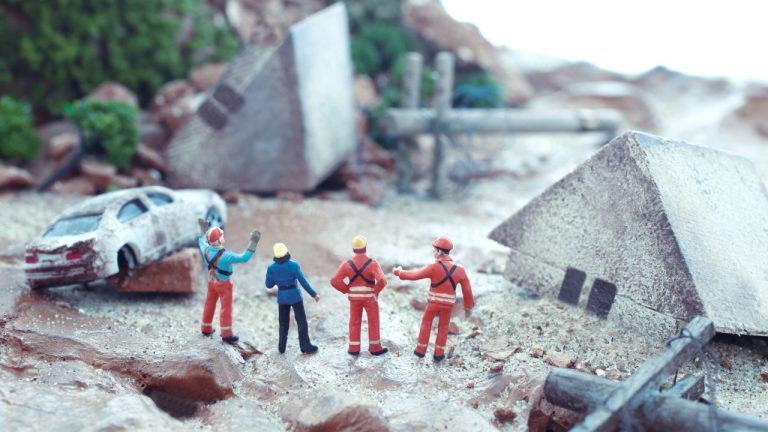The Disinformation Tsunami: How Fake News Compounds Disaster in Japan
The digital age has ushered in an era of unprecedented connectivity, but it has also opened the floodgates to a torrent of misinformation. In Japan, this phenomenon has taken on a particularly sinister dimension in the aftermath of natural disasters, where the spread of fake news exacerbates suffering and hinders relief efforts. From fabricated cries for help to AI-generated images of devastation, disinformation campaigns capitalize on the vulnerability and fear that follow catastrophes. Hori Jun, a former NHK reporter and author of “Saigai to dema” (Disaster and Disinformation), has meticulously documented this troubling trend, highlighting the devastating impact of misinformation and advocating for heightened public awareness.
The 2024 Noto Peninsula earthquake serves as a stark example of how quickly and effectively disinformation can spread in times of crisis. Almost immediately following the tremors, a false plea for help circulated on social media, diverting precious resources and highlighting the manipulative tactics of “impression zombies,” individuals seeking online notoriety and ad revenue through sensationalized posts. These digital opportunists exploit the chaos and uncertainty of disasters, prioritizing personal gain over the well-being of those affected. Hori condemns this behavior as reprehensible, underscoring the gravity of jeopardizing lives for paltry financial rewards. The arrest of the individual responsible for the fake distress call, though a small victory, emphasizes the need for stricter measures to combat this dangerous practice.
The 2016 Kumamoto earthquakes offer another chilling illustration of disinformation’s rapid proliferation. A fabricated image of a lion roaming city streets, ostensibly escaped from the local zoo, quickly went viral, fueling panic among already traumatized residents. This incident, which overwhelmed the zoo with inquiries and hampered evacuation efforts, demonstrates how easily false information can take root and spread like wildfire in the digital landscape. While the perpetrator was eventually apprehended, the incident underscored the inadequacy of existing legal frameworks for addressing online misinformation.
The increasing sophistication of AI technology adds another layer of complexity to the fight against fake news. Hori details a case involving a fabricated image of typhoon-ravaged homes in Shizuoka, generated by an individual with no specialized knowledge in a matter of minutes. This example highlights the alarming ease with which realistic yet entirely false depictions of disaster can be created and disseminated, further blurring the lines between truth and fiction. The accessibility of such powerful tools necessitates a concerted effort to develop strategies for identifying and debunking AI-generated disinformation.
Hori’s work emphasizes the crucial role of fact-checking organizations in stemming the tide of fake news. He points to the Japan Fact-Check Center’s categorization of misinformation into five distinct types: manipulated images and footage from previous disasters, false calls for help, fake donation drives, unsubstantiated crime reports, and conspiracy theories. This framework provides a valuable tool for authorities and individuals to identify and critically evaluate information circulating in the wake of disasters. By raising public awareness and promoting media literacy, these organizations contribute significantly to mitigating the damage caused by misinformation.
The psychological impact of disasters creates fertile ground for the proliferation of fake news. Fear, uncertainty, and a desperate need for information make individuals more susceptible to believing and sharing dubious claims. Hori draws parallels to the tragic events following the 1923 Great Kantō Earthquake, where misinformation fueled violence against innocent individuals. He warns that such atrocities are not relegated to the past; the toxic combination of fear and rumor remains a potent threat, especially when amplified by the reach of social media. Malicious actors exploit these vulnerabilities, manipulating public perception and undermining social order. Individuals, as both consumers and disseminators of information, play a crucial role in either perpetuating or combating the spread of misinformation.
Hori’s book serves as a timely reminder of the critical need for media literacy and responsible information sharing in an increasingly interconnected world. The case of a predicted “megaquake” in Japan, based on a decades-old manga, illustrates how easily unfounded rumors can spread rapidly through social media, even impacting international tourism. While the predicted date passed without incident, the episode underscores the urgent need to equip individuals with the tools to critically evaluate information and resist the allure of sensationalized narratives. In the digital age, where information spreads at an unprecedented pace, the responsibility for combating disinformation rests not only with authorities and fact-checking organizations but also with each individual. By cultivating a discerning approach to online content and promoting responsible sharing practices, we can collectively mitigate the destructive impact of fake news and create a more informed and resilient society.


